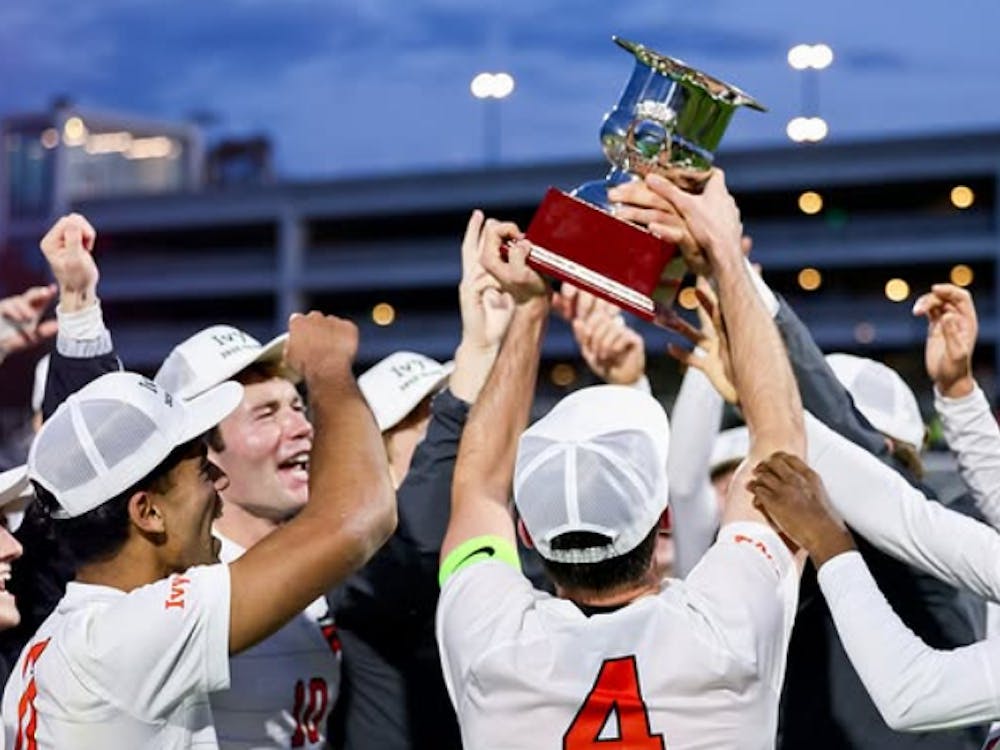I have a confession to make. Or rather, confessions.
I have yet to attend a public lecture this year. I haven't participated in an intramural athletics contest since last November. I forgot to vote in last year's USG elections; oh, and I didn't go to the Third Eye Blind concert.
I write for the 'Prince,' where it happens to be that a large number of us are either English or history majors. I haven't met a single editor who isn't under-performing academically. Take me for example — I've been working on a screenplay now for three years. It's the under-performance which has kept it at two pages for two years.
I guess it's fitting then that as sports editor of the 'Prince' (varsity athlete of journalism?), where writing about intercollegiate athletics is my job, I've been grouped with varsity athletes. I, as much as the center on the basketball team or the goalie on the water polo team, reflect the divide between intercollegiate athletics and the educational mission of this university. And I'm not even a varsity athlete.
But I'm not so sure that this divide really exists — or that if it is does exist, that it is one unique to athletics and athletes.
In his new book, "Reclaiming the Game: College Sports and Educational Values," William Bowen, president of the University from 1972-88, argues that a very real divide exists. I agree with some of the points he makes, though I'm reluctant to generalize like he does.
Is it true that recruited athletes enjoy a substantial admissions advantage? Possibly, but then so do children of alumnae, for example, or nationally-ranked chess players or even Galapagos Island natives.
Bowen argues that eighty percent of recruited athletes in the Ivy League end up in the bottom third of the class. Is this the case at Princeton?
I've been in precepts with sleep-deprived varsity athletes who haven't finished their reading — but also with slow-minded frat guys who stumble on Chaucer, a cappella singers who write incomplete sentences, and even 'Prince' editors who can't discern a major fifth from a major third.
And do athletes exist as a separate entity, even caste, at this University? Yes, but in the same insignificant way that musicians, residential advisors, or the presidents of eating clubs do.
If we are to realign college sports with core educational values, somehow reintegrating varsity athletes into the University's intellectual culture, as Bowen argues we should do, then we engage in a process of transforming this campus.
Princeton stands out among both Ivy League schools and other top institutions because, while its academic standards are so high, its athletic teams consistently overachieve. Changing athletics threatens to change this unique balance.

Realignment is unnecessary, for while we might maintain that academics and athletics are vastly different endeavors, they need not be.
The word 'athlete' has come to mean a person possessing the natural or acquired traits — strength, endurance, and agility — necessary for sports performed in competitive contexts. But the word athlete goes back to the Greek word athlos, which is a contest, especially a contest for a prize, or from athleus, one who competes.
All Princeton students compete, but not necessarily against each other. We compete largely with ourselves, in many different ways, with the ultimate prize being a Princeton diploma.
We can say, then, that forces are creating a divide between athletes and the educational mission of a university — that, for example, as athletics becomes more specialized and winning more important, school work becomes second to practice, and one's schoolmates second to one's teammates.
But that isn't to say that a high degree of learning ceases to exist. When coaches demand a level of excellence from their players, they act on the same level and with the same motives as a conductor demanding this level from his orchestra, or a thesis advisor demanding this from his advisee.
When we seek to realign college sports with core educational values — to lessen practice time, for example, to give athletes more time to study — we seek to fix this divide. But in the process of demanding less from athletes we begin to create a whole new chasm.







